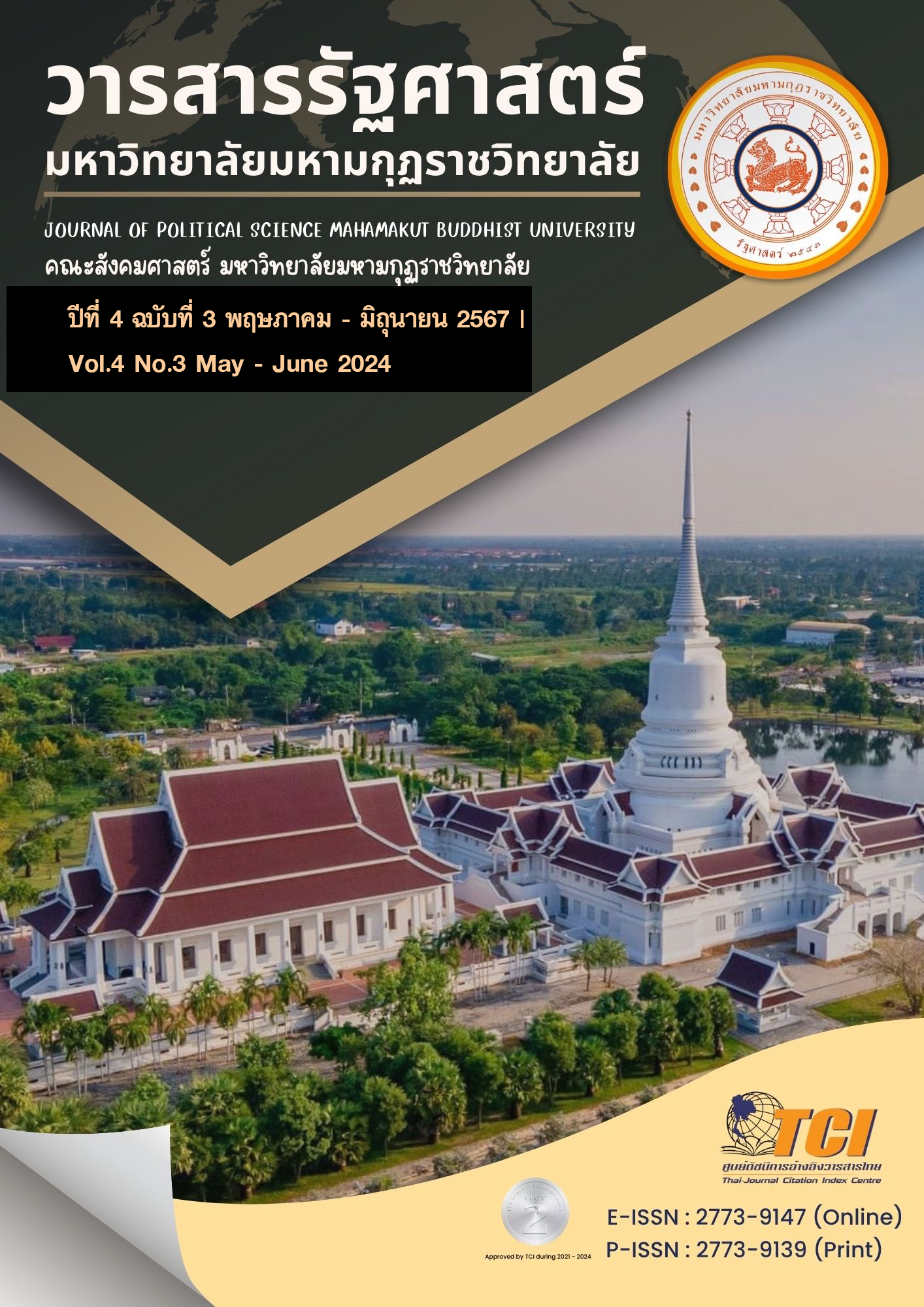MORLUM AND CREATING A SPACE FOR SOCIAL CONSENT IN DISCOURSE "FOLK ARTIST"
Main Article Content
Abstract
This article aims to reflect on the social acceptance discourse of Mor Lam, which has a struggle to create a social acceptance space from the discourse of artists dancing and eating. Become a local artist to preserve arts and culture. Because Mor Lam is a performance of the Isan people that has been around for a long time. But the general public tends to think that Isaan artists are born from the grassroots class who use performing to survive in a dire economic situation. Including the reduction and inferiority of being an artist from the discourse of dancing, making many parents not want their children to learn to sing and dance. Until the impact of cultural inheritance, wisdom gradually disappears because the dignity of artists is gradually devalued by a society that does not consider the issue of preserving art and culture. and viewed as an unsustainable occupation Including being a Mor Lam artist, he still hasn't received formal education as he should. As a result, artists are not seen with their acting abilities. Therefore, you must try to prove yourself in order to gain acceptance from general society. By proving your ability to become famous in the molam performing industry. Or even creating a discourse for Mor Lam with the word Sai Haeng artist. This causes a discourse that reduces the value of art. Therefore, the author would like to reflect on the ability of artists who are the preservers of folk art and culture, who are not devalued by society as just people who dance and eat, but are people who create entertainment and continue to pass on good art.
Article Details

This work is licensed under a Creative Commons Attribution-NonCommercial-NoDerivatives 4.0 International License.
References
กาญจนา แก้วเทพ.(2545). เมื่อสื่อส่องและสร้างวัฒนธรรม, คณะนิเทศศาสตร์ จุฬาลงกรณมหาวิทยาลัย.
กาญจนา อินทรสุนานนท์.. (2540). พื้นฐานทางมานุษยดุริยางควิทยาภาควัฒนธรรม.
คณะศิลปกรรมศาสตร์ มหาวิทยาลัยศรีนครินทรวิโรฆ. กรุงเทพฯ: ม.ป.พ.
จารุวรรณ ธรรมวัตร. (2528). บทบาทของหมอลำต่อสังคมอีสานในช่วงกึ่งศตวรรษ. มหาสารคาม : สถาบันวิจัยศิลปะและวัฒนธรรมอีสาน มหาวิทยาลัยศรีนครินทรวิโรฒ มหาสารคาม.
_______ (2540). ภูมิปัญญาหมอลำเอก : ความรุ่งโรน์ของอดีตกับปัญหาของหมอลำในปัจจุบันรายงานการวิจัยตามโครงการเมธีวิจัยอาวุโส สกว ครั้งที่ 1/2540. มหาสารคาม:คณะมนุษยศาสตร์และสังคมศาสตร์ มหาวิทยาลัยมหาสารคาม.
เจริญชัย ชนไพโรจน์. (2526). ดนตรีและการละเล่นพื้นบ้านอีสาน. มหาสารคาม : คณะมนุษยศาสตร์และสังคมศาสตร์ มหาวิทยาลัยศรีนครินทรวิโรฒ มหาสารคาม.
บุญกว้าง วาทะโยธา. (2524). สัมมนาเพลงพื้นบ้านอีสาน. มหาสารคาม: มหาวิทยาลัยศรีนครินทร วิโรฒ วิทยาเขตภาคตะวันออกเฉียงเหนือ.
ไพบูลย์ แพงเงิน (2534). กลอนลำภูมิปัญญาของอีสาน.กรุงเทพฯ: โอเคียนสโตร์.
ฐิติเทพ สิทธิยศ. (2553). ที่มาที่ไปและทำไมต้องเศรษฐกิจสร้างสรรค์. นักบริหาร, 30(1), 9-12.
ศักดิศรี วงศ์ธราดล. (2567). https://thecitizen.plus/node/96787 เข้าถึงเมื่อ 28 มีนาคม 2567)
ศิวาพร ฟองทอง และคณะ. (2565). หมอลำกับเศรษฐกิจ สังคม และสุขภาพของคนอีสาน. ภายใต้แผนงานยุทธศาสตร์เป้าหมาย (Spearhead) ด้านสังคม แผนงานคนไทย 4.0 สนับสนุนโดย สำนักงานการวิจัยแห่งชาติ (วช.)
UNCTAD. (2010). Creative Economy report 2010. Geneva: United Nation.
ศิริศักดิ์ เหล่าจันขาม. (2567). https://theisaanrecord.co/2023/05/09/billion-economy-of-morlum-the-ignored-thai-soft-power/ออนไลน์ เข้าถึงเมื่อ 22 มกราคม 2567
สุจิตต์ วงเทศ. (2532). ร้องรำทำเพลง : คนตรีและนาฎศิลป์ชาวสยาม. กรุงเทพฯ: พิฆเณศ.
https://www.cea.or.th/th/single-statistic/isan-music-never-die/ออนไลน์ เข้าถึงเมื่อ เมื่อ 22 มกราคม 2567


